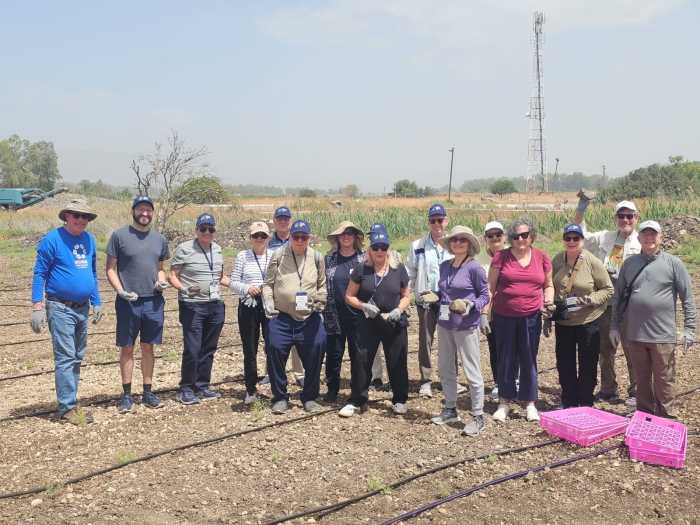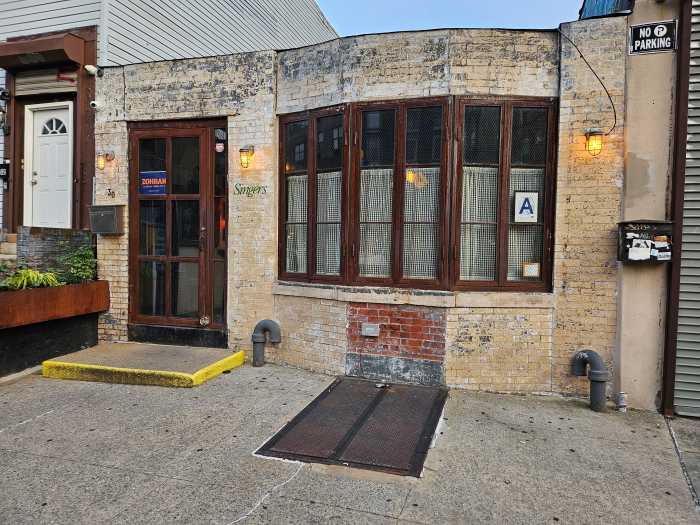By Josh Rogers
Hudson Square is a neighborhood of contrasts. Bordered by a state highway and one of the most congested streets in the city, it’s also home to Holland Tunnel entrances, making it difficult for pedestrians to navigate. Yet it is increasingly becoming the choice destination of creative and new media firms.
Workers and residents often cite the lack of retail as a neighborhood drawback, yet it is also home to a diverse mix of small restaurants.
City Winery, a high end music venue and wine making club, opened in the neighborhood last year, but no-frills concert spaces like Jazz Gallery, S.O.B.’s and Don Hill’s are still able to carry on at a time when similar spaces in other Downtown neighborhoods have closed.
Ellen Baer, president of the new Hudson Square Business Improvement District, said she thinks there will always be room for the small shops and less expensive music spaces because of the mix of small and medium size retail spots.
“We are every bit as interested in the venues with the creaky chairs,” Baer said in an interview last week. “That is part of the charm of this neighborhood. We’ve got City Winery and we’ve got the Jazz Gallery.”
The local music scene has caught the attention of the College Music Journal, a nationally-based series which schedules concerts around New York City. C.M.J. began highlighting a neighborhood last year, directing its members to Lower East Side restaurants and other businesses with passes. At the end of next month, Hudson Square will be the featured neighborhood for the festival.
And the neighborhood also got a pharmacy two months ago. Even more noteworthy, Baer believes Hudson Square Pharmacy is the first store to use the neighborhood name.
“We wanted to make a mark in the new neighborhood, be a landmark, a pillar,” said Al Solman, owner of the drug and convenience store at Hudson and King Sts.
Solman also owns King’s Pharmacy in Tribeca and said he is glad he has more space to stock additional food and other items on Hudson St. because demand is high in the Square. Recently he solved a crisis at CBS Radio when a frantic ad employee came down in a desperate search for a Rubik’s Cube. “She said you make our dreams come true,” Solman said.
Baer said “if a store in 2009 thinks that having Soho as their designation is valuable, I’m hoping that by 2010 and 2011, they’ll think having Hudson Square has value to them. I understand that it’s a business… Yeah, I’d like to see those stores say Hudson Square, but I also understand it is incumbent on us to make that a valuable designation.”
Villager photo by Jefferson Siegel
The Hudson Square BID is beginning to work on ways to solve the neighborhood’s traffic problems including the area around the Holland Tunnel.
Once the center of the city’s printing district, the neighborhood has a mix of offices (many owned by Trinity Church), converted condos and small hotels. Baer said officially there are only a few hundred people living in the neighborhood but she knows that there are many people quietly living in buildings that are not zoned for residential uses and is quite certain the real number is much higher.
The neighborhood is home to architectural and creative companies, many media firms including Newsweek, WNYC Radio and Community Media, owners of The Villager and Downtown Express. Large firms like Edelman public relations and Corbis photography have also moved into the neighborhood. Development projects have slowed as they have throughout the city but work continues on the skyscraper being built by Donald Trump and partners. Though it is situated at Spring and Varick Sts., the condo-hotel will be called Trump Soho.
Baer and many say one of the biggest problems is traffic, and she admits one of the first steps to beginning to solve it will be a Band-Aid approach. Actually it’s much less an admission than it is the name for the first phase of the plan.
“The Band-Aid approach is: let’s just improve enforcement,” she said. “Let’s get some people out on the street who can communicate with one another about how traffic is being routed and moved.”
She said one of the BID’s duties is to work with all of the parties in charge of traffic — the First Precinct, the N.Y.P.D.’s traffic division, the Port Authority, which controls the tunnel, and the state and city Departments of Transportation.
Longer term, she and her staff of three will be working on things like improving the streetscape. Hudson Square’s side streets have many loading docks and blank street walls, making it uninviting to walk east or west. Baer noticed that often workers and residents on Hudson St. are not aware of stores on Varick Ss., and vice versa, and she thinks improving the look of the streets and sidewalks will begin to change that.
The BID will also be hiring a traffic consultant to develop new ideas and sift through existing proposals to improve the safety.
“I have 4 million ideas [that have been suggested] but I’m not a traffic expert,” she said. She said there will be many public meetings with Community Board 2 and others as the ideas are developed.
The BID will be able to sell bonds to help finance projects to change street patterns and perhaps add more plaza space, and will also look for federal transportation and environmental funds as well.
Baer is also beginning an effort to promote “sustainability” throughout the neighborhood. She says it’s a word that is used so much it is losing its meaning, but the effort will extend beyond green policies and will also encourage philanthropic initiatives — the sort of things that attract new firms and youn employees to an area.
“Whatever that new new thing is,” she said, “I hope it finds a home at Hudson Square.”





































